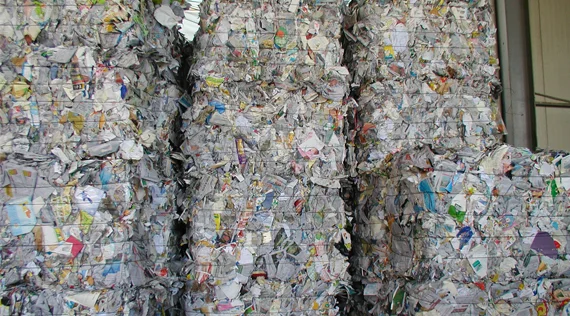
SEATTLE (Waste Advantage): Plastic pollution is a global issue. This material is often nonbiodegradable and ends up disrupting ecosystems, both in water and on land. The smaller problem, though, is microplastics. These tiny pieces are hard to see and can end up anywhere and everywhere. The effects of microplastic pollution are just as hard to see.
While regular plastic pollution is easy to spot — bottles floating in the ocean, containers on the grass — microplastics are more difficult to get a handle on. They’re tiny particles that are usually as small as 5 millimeters, or even more minuscule. If these particles break down enough, they can become microns.
Since plastics are so common throughout the world, it’s hard to say just how many microplastics are out there. However, with an estimated 8 million metric tons of plastics entering the oceans every year, there are bound to be a lot of microplastics as well.
Microplastics come from fabrics like polyester or synthetic materials. A polyester jacket, for instance, may have plastics as part of its structure. With enough washes or wear and tear, the material breaks down and eventually releases the plastic particles. They’re small enough to be only millimeters in size — hence why they’re microplastics.
Unfortunately, the smaller the particle, the easier they can disperse throughout the environment, ecosystems and air.
One of the most common ways microplastics end up in bodies of water like oceans is through wastewater disposal. First, in the washing machine, these particles break off their material or fabric and go down the drain. A treatment plant for wastewater then handles any water that comes its way. However, with microplastics, it’s a bit more complicated.
These particles are tiny enough that they can slip through the filtration and treatment plants. Then, they carry on through the outlet, which is often the ocean. Other instances of microplastic pollution are more direct — like the particles falling off objects or fabrics while in the ocean or outdoors.
Then, microplastic pollution contributes to the overall plastic waste in the world. It doesn’t end there, though. The air is the next destination of microplastics. With the tides changing and waves crashing on shores, tiny air bubbles form within the water. As the wave breaks, these air bubbles catapult into the atmosphere. It’s how salt stays in the air at the beach. During this process, the bubbles can trap microplastics and therefore carry them into the air as well.
Ultimately, microplastics end up everywhere and are seemingly inescapable.
Courtesy: www.wasteadvantage.com
| Copper Scrap View All | |
| Alternator | 0.32 (0.01) |
| #1 Copper Bare Bright | 3.77 (0.07) |
| Aluminum Scrap View All | |
| 356 Aluminum Wheels (Clean) | 0.73 (0.02) |
| 6061 Extrusions | 0.64 (0.02) |
| Steel Scrap View All | |
| #1 Bundle | 475.00 (0) |
| #1 Busheling | 495.00 (0) |
| Electronics Scrap View All | |